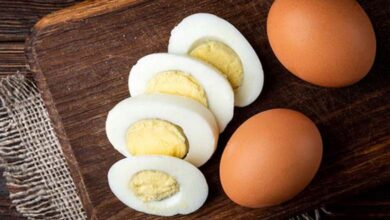Lettuce at Suhoor… A Shield against Dehydration during Fasting

Lettuce is a leafy vegetable rich in essential nutrients, making it an ideal choice to include in the suhoor meal during the holy month of Ramadan. It is distinguished by its high content of vitamins, minerals, fiber, and water, which supports overall health and helps the body cope with long fasting periods.
-
How to Avoid Headaches During the First Days of Ramadan?
-
For diabetes patients: “Amazing benefits” of lettuce you can’t imagine
According to reports from the Kuvings website, lettuce contains a high level of potassium, which helps maintain fluid balance within the body, preventing symptoms of dehydration such as fatigue, dizziness, and disruption. It also supports digestion, reduces constipation issues, and promotes a feeling of fullness thanks to its fiber content.
Another report published by Cleveland Clinic indicates that lettuce is a rich source of vitamin K, which helps strengthen bones. It is also low in calories, making it suitable for maintaining a healthy weight. Additionally, lettuce boosts the body’s energy and vitality, as good hydration is linked to a sense of activity and strength.
-
For diabetes patients… “Amazing Benefits” of Lettuce that you can’t imagine
-
How do you adjust your food?
Experts recommend consuming lettuce during the suhoor meal to maintain hydration levels and reduce feelings of fatigue or dehydration during fasting. It can be included in salads or as a healthy ingredient in various dishes to benefit from its nutritional value and its role in enhancing health during the holy month.
The kidneys play a vital role in filtering waste and excess water from the body, contributing to regulating blood pressure, electrolyte balance, and medication metabolism. When the kidneys face health issues, it becomes crucial to follow an appropriate diet to alleviate pressure on them and prevent complications from worsening.
-
How the ketogenic diet can help prediabetics?
-
Diabetes: the best snacks should be preferred when you have
A kidney-friendly diet helps control blood pressure, reduce protein levels in urine, and prevent the progression of kidney diseases.
This diet includes reducing the intake of foods high in sodium, potassium, and phosphorus, as the accumulation of these minerals can worsen the condition. Reducing sodium is a key step in maintaining kidney health, as it helps lower blood pressure and prevent fluid retention. It is recommended to choose fresh foods instead of processed products, which often contain high amounts of sodium.
-
Autumn and the start of school: A nutritional recipe to boost your child’s immunity
-
5 Best green vegetables that you should eat regularly
As for potassium, although it is important for nerve functions and muscle control, high levels can pose a risk for people with kidney weakness. Therefore, it is advised to consume potassium-rich foods such as bananas, oranges, potatoes, and tomatoes in moderation.
Regarding phosphorus, its accumulation in the body can lead to bone and heart diseases. Therefore, it is recommended to reduce the intake of dairy products, nuts, and seeds rich in phosphorus.
-
Autumn and the start of school: A nutritional recipe to boost your child’s immunity
-
Eggs or Almonds? A Comparison of Their Protein Content
Foods beneficial for kidney health include cabbage, bell peppers, garlic, onions, apples, and berries, which are low in sodium and potassium and provide essential nutrients without putting pressure on the kidneys.
Egg whites are also a good option as they are high in protein and low in phosphorus. Fish and skinless chicken are preferable to red meat, as they contain less fat and phosphorus.
Kidney patients should collaborate with their doctors to create a balanced diet plan that meets their medical needs, helping improve quality of life and support long-term kidney health.












